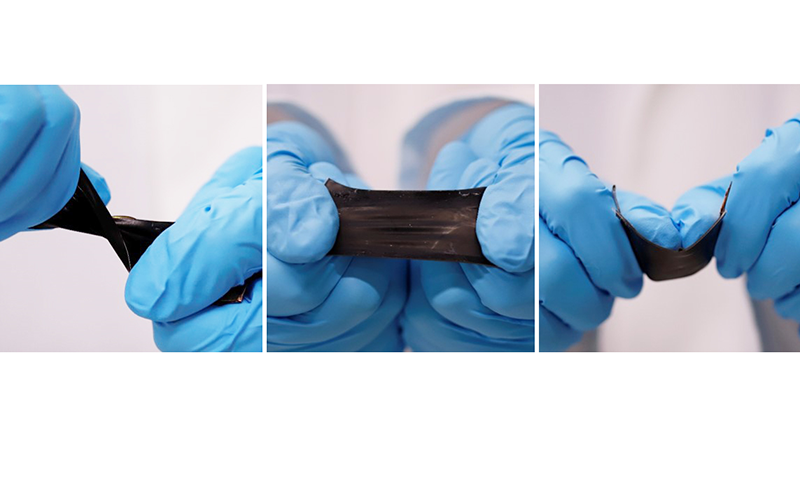With the rising popularity of wearable devices, manufacturers are focusing on computers or smartphones with screens that can be folded or rolled. But unlike foldable displays, there are no foldable batteries so far. Now, researchers at ETH Zürich technical university in Switzerland have developed a new “stretchable battery”.
The research team led by Markus Niederberger, Professor for Multifunctional Materials at ETH Zurich, have developed a prototype for a flexible thin-film battery that can be bent, stretched and even twisted without interrupting the supply of power.
Read more PolyU Researchers Develop Flexible High-Energy Textile Lithium Battery for Wearables
The researchers followed in the footsteps of traditional batteries, creating the flexible battery in layers, by stacking semi-rigid layers of anode, cathode, electrolyte on top of each other, and then encasing the sandwich in a rigid container. But, it’s the first time all components of the batteries have made use of only flexible materials, Niederberger said in a press statement. “To date, no one has employed exclusively flexible components as systematically as we have in creating a lithium-ion battery,” he said.
The anode and the cathode of the battery consist of bendable polymer composite that contains electrically conductive carbon and that also serves as the outer shell. A thin layer of micronized silver flakes was applied on the interior surface of the composite. Due to the way the flakes overlap like roof tiles, they don’t lose contact with one another when the elastomer is stretched. This guarantees the conductivity of the current collector even if it undergoes extensive stretching. And in the event that the silver flakes do in fact lose contact with each other, the electrical current can still flow through the carbon-containing composite, albeit more weakly, reports Peter Ruegg at ETH.

Researchers then masked off a predefined area of the silver layer and sprayed anode and cathode powder onto a precisely defined area of the silver layer. The cathode is composed of lithium manganese oxide and the anode is a vanadium oxide.
In the final step, the anode and cathode are stacked on top of each other with the special electrolyte gel. Unlike the electrolyte in currently available lithium-ion batteries which can spontaneously combust when exposed to air, this new design isn’t dangerous when exposed to air thanks to its lithium salt and water-based composition.
Read more Stretchable, Bendable Electronic Circuits Could Give Way to Flexible Electronics
What makes this electrolyte so special is its non-flammable and non-toxic properties. Unlike the electrolyte in current lithium-ion batteries which can spontaneously combust when exposed to air, this new design won’t really do anything if exposed to air thanks to its lithium salt and water-based composition. This makes it safer for wearables, especially when highly-flammable clothing is involved.
Niederberger emphasizes that this gel is environmentally more friendly than the commercial electrolytes.












